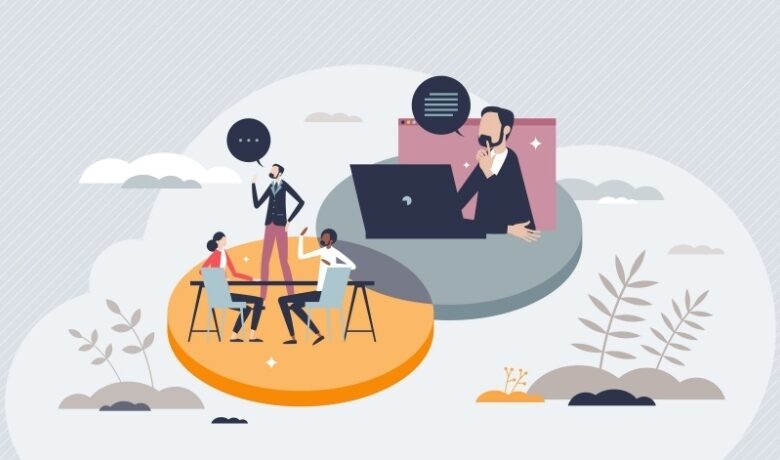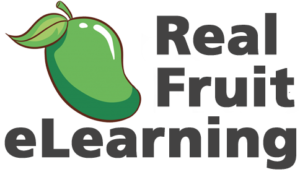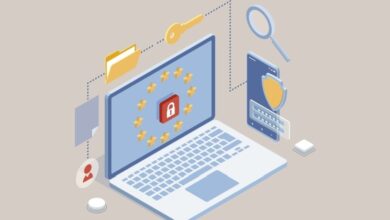Blended Learning Education: The Future

The Real Potential Of Education
Education is evolving, and the future holds innovative opportunities for teachers and students. Blended learning is a promising approach that is making waves in the education sector. Blending traditional face-to-face instruction with online learning, this educational model has the potential to revolutionize the way knowledge is imparted and acquired.
Blended learning leverages the power of technology to create a more personalized and interactive learning experience. By combining real-time classroom teaching with self-paced online modules, students have the flexibility to learn at their own pace while also benefiting from the guidance of their teachers. This approach enables educators to experiment with new teaching methods and engage students in exciting and meaningful ways.
The benefits of blended learning go beyond convenience and flexibility. Research suggests that this form of education improves student outcomes, fosters critical thinking skills, and promotes collaborative learning. By transforming the traditional classroom into a dynamic environment that harnesses the potential of technology, blended learning ensures that students receive a well-rounded education that prepares them for future challenges.
As the world advances rapidly, embracing blended learning is necessary to unlock education’s potential. With its ability to personalize learning, increase engagement, and enhance student outcomes, this approach is key to shaping a brighter future for learners worldwide.
The Benefits Of Blended Learning
Blended learning leverages the power of technology to create a more personalized and interactive learning experience. By combining real-time classroom teaching with self-paced online modules, students have the flexibility to learn at their own pace while also benefiting from the guidance of their teachers. This approach enables educators to experiment with new teaching methods and engage students in exciting and meaningful ways.
Blended learning offers numerous benefits for both students and educators. Firstly, it allows for personalized learning experiences. Students can progress at their own pace, focusing on areas where they need more support while quickly moving through material they already understand. This individualized approach helps students develop a deeper understanding of the subject matter and promotes a sense of ownership over their learning journey.
Secondly, blended learning fosters critical thinking skills. Combining online resources and in-person instruction encourages students to analyze information, solve problems, and think critically. This active engagement with the material enhances their ability to apply knowledge in real-world situations, preparing them for success beyond the classroom.
Additionally, blended learning promotes collaborative learning. With online platforms and tools, students can collaborate with their peers, share ideas, and work on projects together, regardless of physical location. This collaborative aspect of blended learning enhances communication and teamwork skills and prepares students for the interconnected nature of the modern workforce.
Statistics And Trends
The growth of blended learning in recent years is a testament to its effectiveness. According to a Babson Survey Research Group report, the number of students taking at least one online course has steadily increased over the past decade. In 2018, over 6.9 million students in the United States alone were enrolled in at least one online course. This upward trend reflects the growing recognition of the benefits of blended learning in enhancing educational outcomes.
Furthermore, blended learning has proven particularly effective in improving student achievement. A United States Department of Education study found that students who engaged in blended learning outperformed their peers in traditional classrooms. The study also highlighted the positive impact of blended learning on student motivation and engagement, leading to increased satisfaction and persistence.
As technology advances, the potential for blended learning to transform education is even greater. Virtual Reality (VR), Augmented Reality (AR), Artificial Intelligence (AI), and adaptive learning technologies are just a few examples of tools that can enhance the blended learning experience. These technologies can create immersive and interactive learning environments, giving students unique opportunities to explore and understand complex concepts.
Implementing Blended Learning In Traditional Educational Institutions
Integrating blended learning into traditional educational institutions requires careful planning and implementation. One of the first steps is ensuring that the necessary infrastructure and resources are in place. This includes reliable internet access, appropriate student devices, and a Learning Management System (LMS) to manage online content and assessments.
Professional development for teachers is also crucial in successfully implementing blended learning. Educators must be trained to integrate technology effectively into their lessons and use online resources to support student learning. Providing ongoing support and mentorship can help teachers navigate the challenges of blended learning and maximize its benefits.
It is important to note that transitioning to blended learning does not mean abandoning traditional teaching methods entirely. Face-to-face instruction still plays a vital role in the learning process. Blended learning should complement conventional teaching methods, providing additional resources and opportunities for students to engage with the material.
Best Practices For Designing Blended Learning Experiences
Designing effective blended learning experiences requires careful consideration of Instructional Design principles. Here are some best practices to keep in mind:
- Clear learning objectives
Clearly define the learning objectives for each lesson or module. This will guide the selection of appropriate online resources and activities. - Engaging content
Use various multimedia resources such as videos, interactive simulations, and online quizzes to make the learning experience engaging and interactive. - Active learning
Incorporate opportunities for students to participate and apply their knowledge actively. This can include group discussions, hands-on activities, and project-based assessments. - Regular feedback
Provide timely and constructive feedback to students to guide their learning and ensure they are on the right track. - Flexibility and differentiation
Offer multiple pathways for students to demonstrate their understanding and accommodate different learning styles and abilities.
By following these best practices, educators can create blended learning experiences that are engaging, effective, and tailored to their students’ needs.
Tools And Technologies For Blended Learning
Blended learning relies heavily on technology to deliver online content and facilitate student engagement. Here are some popular tools and technologies used in blended learning environments:
Learning Management Systems
LMS platforms, such as Moodle and Canvas, provide a centralized platform for organizing and delivering online content, tracking student progress, and facilitating communication between teachers and students.
Video Conferencing
Platforms like Zoom and Google Meet allow for real-time virtual classroom sessions, enabling students and teachers to interact and collaborate remotely.
Online Collaboration Tools
Tools like Google Docs, Microsoft Teams, and Padlet enable students to collaborate on projects, share ideas, and provide feedback to their peers.
Interactive Learning Resources
Interactive simulations, virtual labs, and online quizzes engage students and provide hands-on learning experiences.
Adaptive Learning Software
Adaptive learning platforms like Khan Academy and DreamBox personalize the learning experience by adjusting the content and pace based on each student’s needs.
These tools and technologies continually evolve, offering educators various options to enhance the blended learning experience and cater to their students’ diverse needs.
Challenges And Solutions In Implementing Blended Learning
While blended learning offers numerous benefits, it also presents challenges that must be addressed. One of the main challenges is ensuring equitable access to technology and internet connectivity for all students. Not all students can access reliable internet at home or the necessary devices to participate in online learning. Schools and educational institutions must implement strategies to bridge this digital divide, such as providing loaner devices or establishing community internet access points.
Another challenge is the need for ongoing technical support and maintenance of the technology infrastructure. Schools must allocate sufficient resources and personnel to ensure that the technology used in blended learning environments is reliable, up-to-date, and properly maintained.
The shift to blended learning requires a change in mindset and pedagogy for both teachers and students. Educators need to be open to new teaching methods and embrace the role of facilitator and mentor rather than the sole source of knowledge. On the other hand, students need to take responsibility for their learning and develop self-discipline and time management skills.
Collaboration and communication among all stakeholders are crucial to addressing these challenges. Regular communication between teachers, students, parents, and administrators can help identify and resolve any issues that arise during the implementation of blended learning.
Success Stories In Schools And Universities
Blended learning has been successfully implemented in various educational settings worldwide, with many success stories to showcase its effectiveness.
One example is a network of charter schools in the United States. They combine online learning with traditional classroom instruction to provide personalized education to students from underserved communities. Their innovative approach has resulted in improved student outcomes and increased parent engagement.
Arizona State University has embraced blended learning in higher education to enhance student success and retention rates. By offering a mix of in-person and online courses, ASU has been able to cater to a larger number of students while maintaining high-quality education. Their efforts have been recognized, with ASU being ranked as the most innovative university in the United States for six consecutive years by U.S. News & World Report.
These success stories demonstrate the transformative power of blended learning in improving educational outcomes and creating opportunities for students from diverse backgrounds.
The Role Of Teachers In Blended Learning
While technology plays a crucial role in blended learning, teachers remain at the educational process’s heart. Blended learning requires skilled educators who can effectively integrate technology into their teaching practice and create meaningful learning experiences for their students.
Teachers in blended learning environments act as facilitators and mentors, guiding students through learning and providing support when needed. They design and curate online content, facilitate discussions, and provide timely feedback to students. By leveraging technology, teachers can create a more engaging and personalized learning experience for their students.
In addition, teachers play a vital role in assessing student progress and adjusting instruction accordingly. They use data from online assessments and student interactions to identify areas where students may struggle and provide targeted interventions. This individualized approach ensures that each student receives the support they need to succeed.
Conclusion: Embracing The Future Of Education With Blended Learning
As the world rapidly advances, embracing blended learning is necessary to unlock education’s potential. With its ability to personalize learning, increase engagement, and enhance student outcomes, this approach is key to shaping a brighter future for learners worldwide.
Blended learning offers a flexible and dynamic educational model that combines the best of both traditional instruction and online learning. By leveraging technology and providing personalized learning experiences, blended learning empowers students to become active learners, critical thinkers, and collaborators.
Successful implementation of blended learning requires careful planning, ongoing support, and a willingness to adapt to students and the educational landscape’s changing needs. By investing in the necessary resources, providing professional development for teachers, and fostering collaboration among all stakeholders, academic institutions can harness the power of blended learning to prepare students for the challenges and opportunities of the future. Together, we can unleash the potential of blended learning and transform education for future generations.

Real Fruit eLearning
Cost-effective, Bespoke eLearning. Real Fruit eLearning specialises in creating engaging and interactive digital learning experiences tailored to your needs.
Source link



